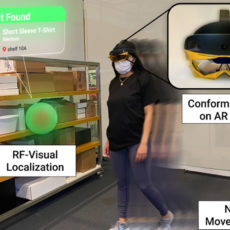
MIT engineers have fabricated a new supercapacitor cement by combining cement, carbon black and water. In other words, this battery of sorts could facilitate the use of renewable energy sources like solar, wind and tidal power by helping networks remain stable despite fluctuations in supply.

When cement and carbon black are combined with water, this supercapacitor is the result, making it a viable alternative to batteries. Future applications include directly incorporating this concrete into foundation of a house, where it can be used to store an entire day’s worth of energy while adding little to the cost of the house and adding structural strength. Or, a concrete roadway could be paved with this cement to offer wireless charging for electric cars as they travel over it. This is made possible because the cement-based material boasts an extremely high internal surface area, thanks to a dense, interconnected network of conductive material within its bulk volume.
- Portable charger can support charging four devices at the same time. Among them, Type-C cable and USB-A output can provide 5V3.1A high-speed output,...
- Power Bank Built in Three output cables and one input cable. Portable charger Built in Micro,Type-C, IOS cable for output. Also built in USB-A input...
- Power bank has a built-in smart IC chip, which can accurately identify the vast majority of mobile devices on the market and match the corresponding...

The material is fascinating…because you have the most-used man-made material in the world, cement, that is combined with carbon black, that is a well-known historical material — the Dead Sea Scrolls were written with it. You have these at least two-millennia-old materials that when you combine them in a specific manner you come up with a conductive nanocomposite, and that’s when things get really interesting,” said Admir Masic, MIT Professor.





